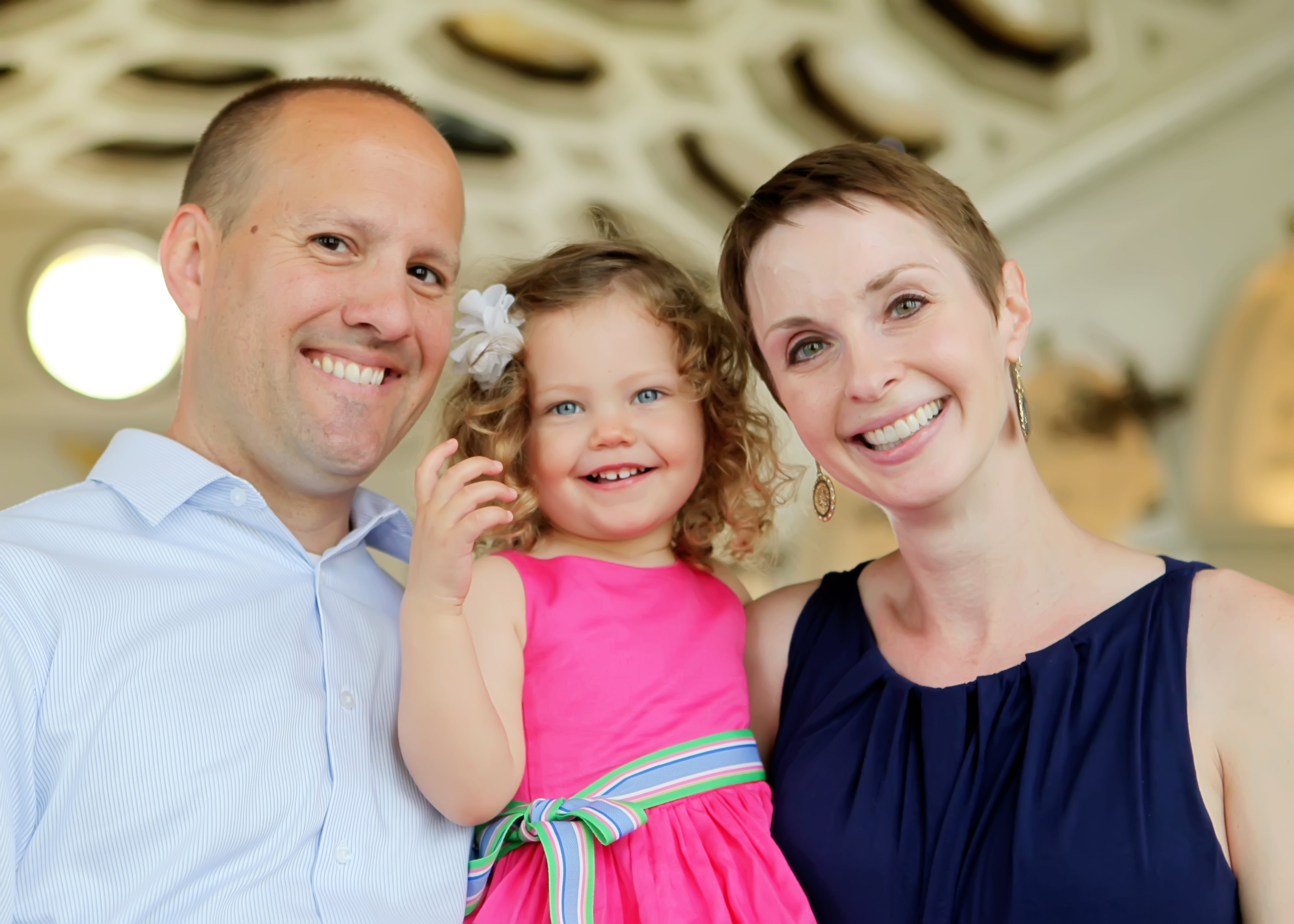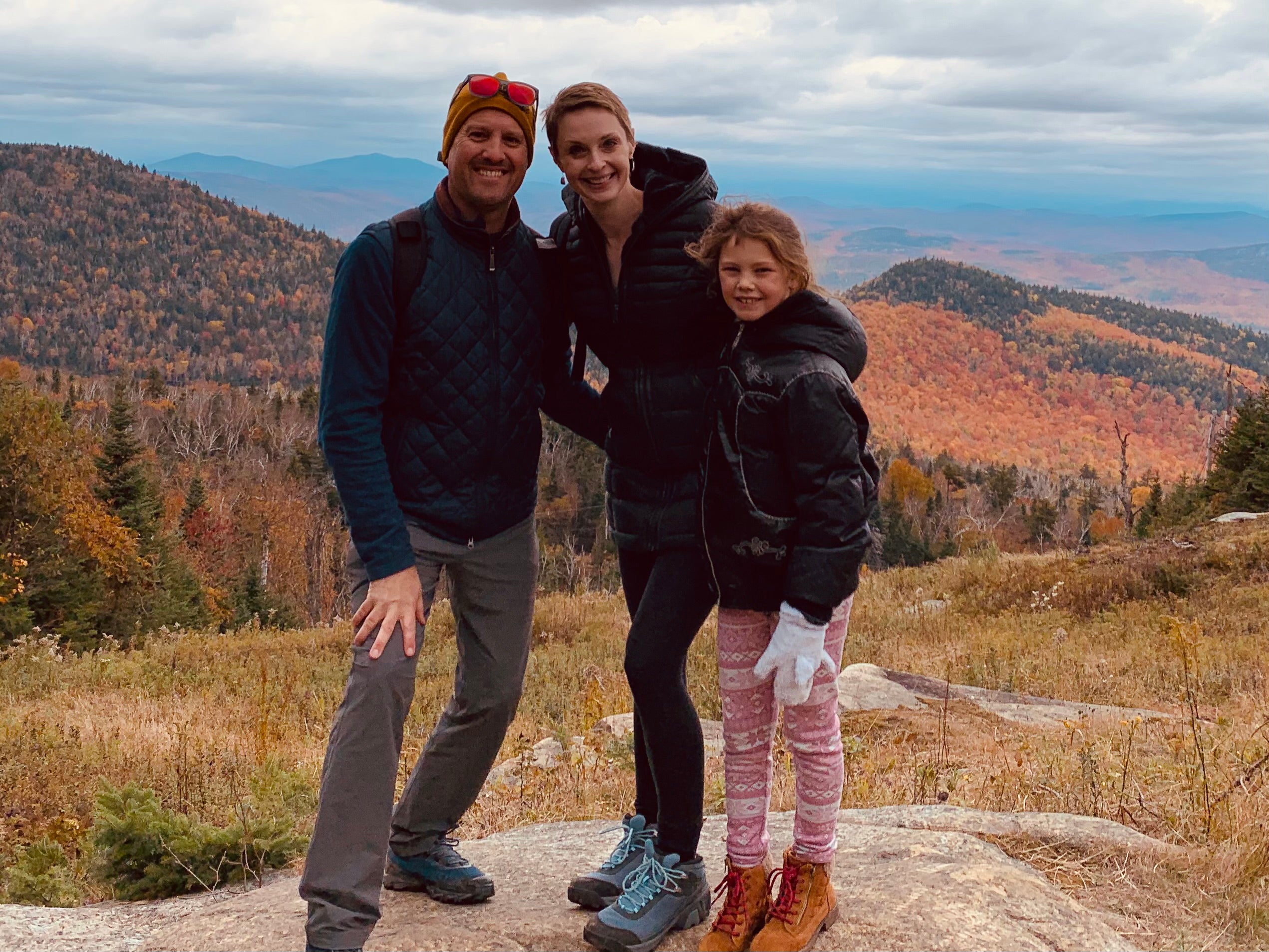How one woman’s quest to understand her chronic fatigue sparked a breakthrough
Unexplained tiredness was driving Amanda Twinam crazy. Her journey for answers led to a scientific discovery that could help others, as Brian Vastag explains

Amanda Twinam’s journey to understand her decades-long fatigue began with a breast cancer diagnosis at 28.
Amanda underwent a mastectomy before enduring chemotherapy. The medicines made her sick and triggered seizures, which eventually brought her to a rheumatologist.
That doctor found a marker for autoimmune diseases in Amanda’s blood. And yet, none of the proposed diagnoses fully fit.
“Fatigue was my primary complaint, sometimes my only complaint,” says Amanda, who’d had a bout of suspected mononucleosis in high school that left her exhausted for months. “But no one knew what to do.”
In 2015, after further testing, Amanda, now 44, was found to carry a genetic cancer disorder, Li-Fraumeni syndrome. A second breast cancer diagnosis shortly followed, and Amanda underwent another mastectomy.
But Amanda knew that something else was wrong. As she moved into her 40s, she was having increasing trouble standing and walking.
The lawyer, from Albany in New York State, scaled back to part-time work, as she couldn’t keep up with her legal cases while raising a young daughter.
“I was a decreasingly functional human and had no great explanation for it, which made me feel crazy,” she says. “Doctors didn’t know what to do with me.”
So Amanda undertook a years-long journey to understand her continuing fatigue, neuropathy, muscle weakness and other problems.
Her dogged efforts led to a new scientific discovery at the National Institutes of Health (NIH) and a promising new line of research that may end up helping many other people with chronically fatiguing illnesses, possibly including long Covid.
“We’re very excited about trying” drugs to treat the problem identified in Amanda, said Paul Hwang, an NIH researcher who led the work.
The red flags that Amanda had an unrecognised chronic illness began after her suspected case of mononucleosis in high school. She says she feels she never fully recovered.
One big clue: In college, after exercising, Amanda would not experience an endorphin rush. Instead, she told her friends she “felt like garbage.”
Between her two breast cancers, Amanda decided to go back to school for a master’s degree in public health. She wanted to understand biostatistics on the path to understanding herself.
“I was genuinely more excited when I got a 100 on a biology midterm than when I passed the bar,” she says.
Pivotal moment

In 2016, she was intrigued by a journal article about Li-Fraumeni syndrome written by Hwang. The article described problems with mitochondria – the famous powerhouses of cellular biology, small tubelike structures inside cells that produce the energy we need to live.
In people with this cancer syndrome, Hwang’s lab had found that mitochondria produce too much energy, which cancer cells gobble up as they metastasise. Amanda wondered whether her specific version of Li-Fraumeni Syndrome could lead to the opposite problem, too little energy.
Amanda began a message to Hwang that proved pivotal: “I read with interest your recent article on inhibiting mitochondrial respiration in a mouse model of Li-Fraumeni syndrome.”
“I had zero expectations,” Amanda says. “Here’s me sending an email to this fancy science researcher who isn’t going to give me the time of day.”
Hwang, who runs a laboratory at the National Heart, Lung and Blood Institute, responded the next day.
He wrote: “Yes, I agree with you, it is possible that [your version of Li Fraumeni Syndrome] may be altering metabolism and causing your fatigue symptoms.”
Hwang was wrong – Amanda’s energy problems had nothing to do with Li-Fraumeni syndrome. But it would take Hwang and colleagues years of benchwork, including making genetically modified “Amanda mice”, to understand this.
“Amanda showed up and she challenged us,” says Hwang during an interview in his office. “So we dug.”
Hwang brought Amanda to Bethesda in 2017. During a battery of tests, a curious result popped up. Amanda’s calf muscle took a long time to replenish an energy-carrying molecule after a short exercise session. In other patients with Li-Fraumeni syndrome, this molecule regenerates in an average of 35 seconds. In Amanda, it took 80 seconds.
“We never see it that delayed,” Hwang says.
Puzzled, Hwang flew Amanda’s brother and father to Maryland, as they both also carried a gene for Li-Fraumeni. But on the energy-production test, the two men showed quick energy rebound, unlike Amanda. Neither of them had ever complained of serious fatigue, either. Amanda was the outlier.
Hwang now had strong evidence that Amanda’s energy problems - both at the cellular and the human level – were caused by something other than Li-Fraumeni. But what?
Breakthrough
Around the same time, in 2017, Hwang received another serendipitous correspondence. NIH researcher Brian Walitt had heard Hwang was studying energy production inside mitochondria.
Walitt was interested because he was orchestrating an intensive study on a small number of inpatients at NIH’s research hospital who were diagnosed with chronic fatigue syndrome (CFS), also known as myalgic encephalomyelitis (ME). (I was a patient in this study and Hwang also used my data in his research.)
This contact sparked Hwang’s curiosity: What if this unusual cancer syndrome patient also had an illness, such as ME/CFS, that causes chronic fatigue?
Hwang began a detailed biochemical search. He found that skin cells taken from Amanda appeared to be churning out an excess of a protein called WASF3. Zooming inside Amanda’s mitochondria, Hwang and colleagues eventually saw something stunning: like a stick jammed into bicycle spokes, the overabundant protein was literally gumming up the gears of energy production.
“It’s really striking,” Hwang says.
Mitochondria make energy by a process called respiration, spinning oxygen and glucose into energy-carrying molecules. At the centre of this chemical chain reaction is an 800-pound biochemical gorilla called the supercomplex. The protein Amanda made too much of? It rudely jams up the supercomplex.
“It’s making this whole thing disassemble,” Hwang says. “It’s literally falling apart.”
Extensive lab work confirmed and extended the findings. In dishes of cells, amping up WASF3 turned down cellular energy production. Tamping it down led to more energy. Mice bred to make too much of the protein got tired quickly, as Amanda does, and will walk on a treadmill for about half as long as normal mice.
A final serendipity broadened Hwang’s research from a single patient to an entire population of sick people. He obtained muscle tissue from Walitt’s ME/CFS patients. Nine out of 14 had a similar overabundance of WASF3 as Amanda, and, on average, the group’s levels of this protein were higher than that of healthy volunteers. Although the sample size is small, the finding suggests that this energy-squashing problem is widespread in ME/CFS.
The research triggered by Amanda culminated in August with a publication from Hwang and colleagues in the journal PNAS. Scientists in the small field of ME/CFS research are excited by the discovery, which points to a potential – and badly needed – treatment strategy.
“It was done very elegantly,” says Mady Hornig, who also studies ME/CFS as a physician researcher at Columbia University’s Mailman School of Public Health. “It’s not very common that we do all of these... steps, having doctors who are really persistent about what is happening with one individual and applying a scientific lens.”
‘I’m not a shirker’

ME/CFS is common – up to 2.5 million Americans have it, according to a 2015 Institute of Medicine Report – but also commonly misunderstood.
Research funding has been scarce. Diagnosis is often delayed or never arrives. The pandemic has dramatically added to the ranks of people with ME/CFS, as studies find that up to half of people with long Covid qualify for that diagnosis. There are no blood tests to identify the disorder, no treatments approved by the Food and Drug Administration, let alone a cure. Up to a quarter of all ME/CFS patients are bedbound.
For Hwang, developing a treatment for the illness is now “what keeps me going.” His small laboratory, just four scientists, is planning a clinical trial with a drug that recently came onto the market for another disease.
“Amazing findings in medicine are sometimes based on one patient,” he says.
As for Amanda, after decades of feeling ill with no diagnosis that ever made sense, she believes her own story has finally been legitimised and in a major scientific journal at that.
“There’s this difference between cancer and chronic fatigue syndrome,” a diagnosis her rheumatologist has finally added to her file, she says. “Everybody believes you when you have cancer. You joke about having a ‘cancer card’ to get off from doing things. No one is handing out CFS cards.
“I can finally say, ‘It’s not psychological. I’m not a malingerer.’ We now have a scientific explanation.”
This article originally appeared in The Washington Post






Join our commenting forum
Join thought-provoking conversations, follow other Independent readers and see their replies
Comments